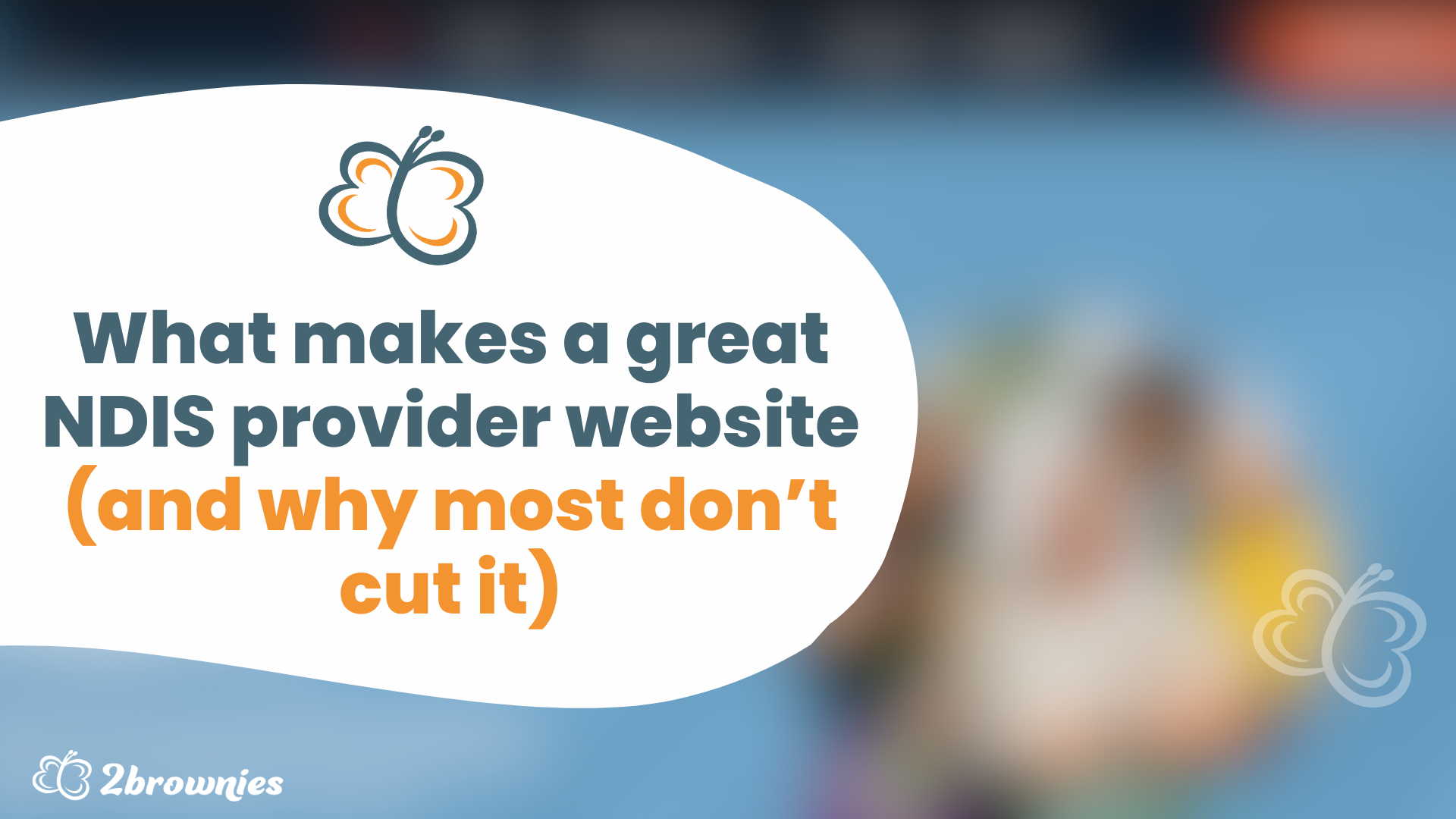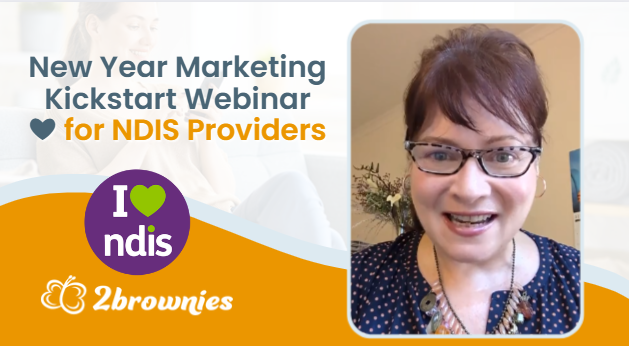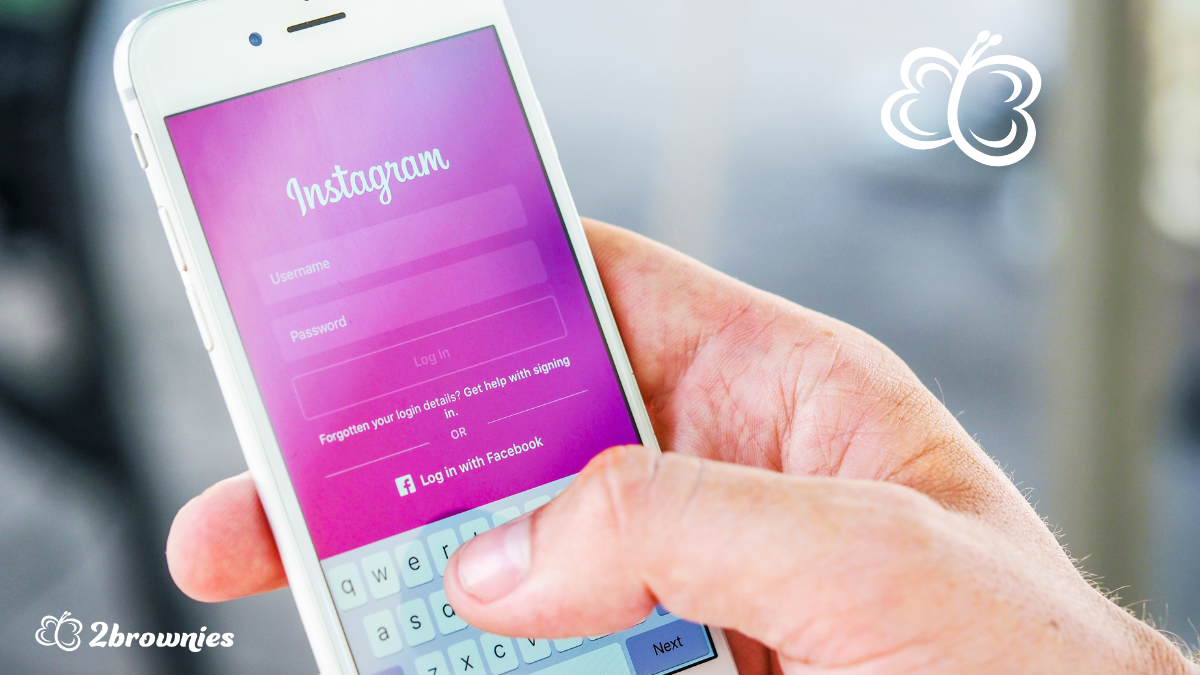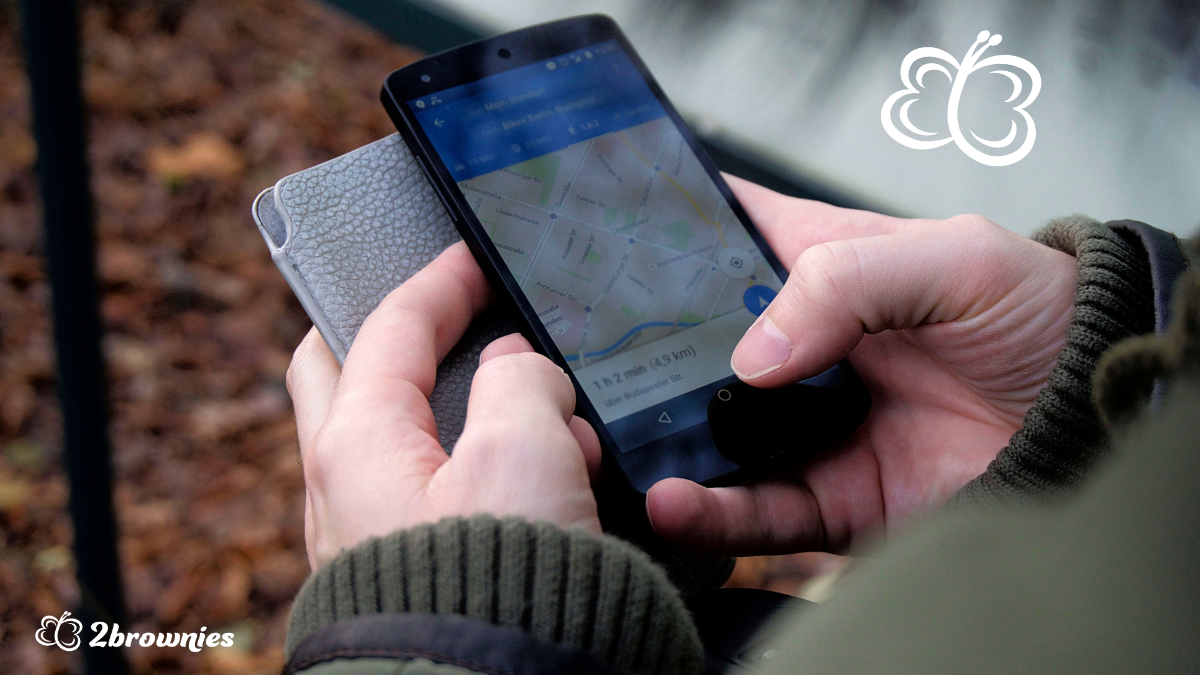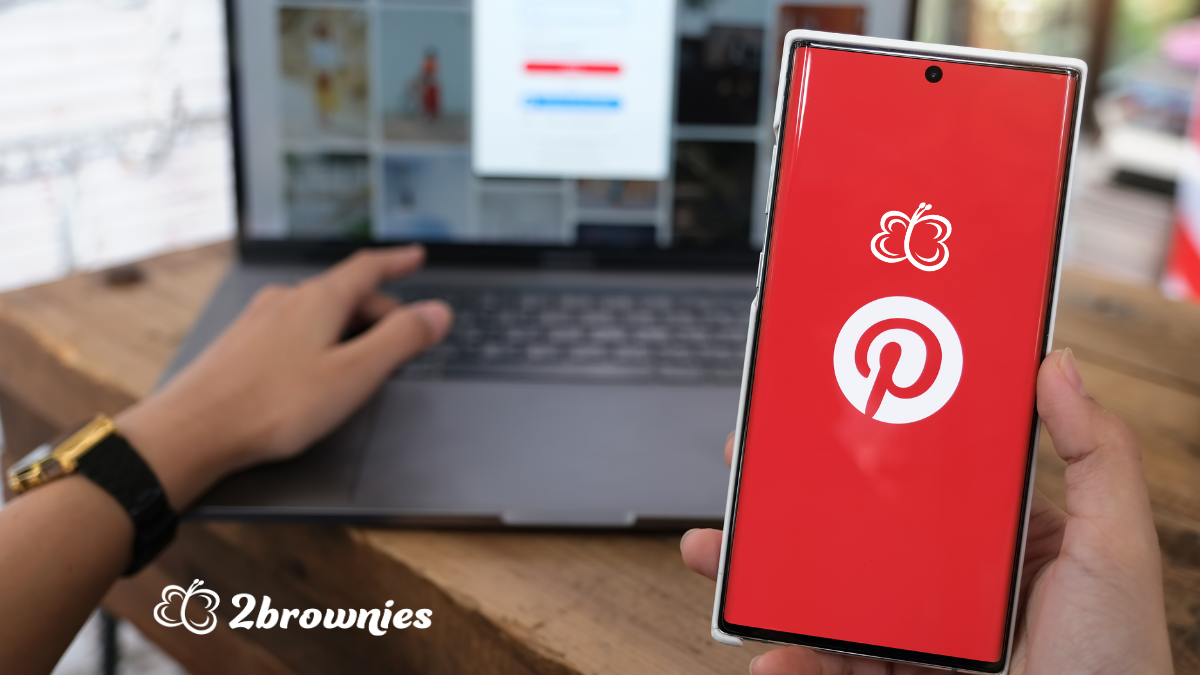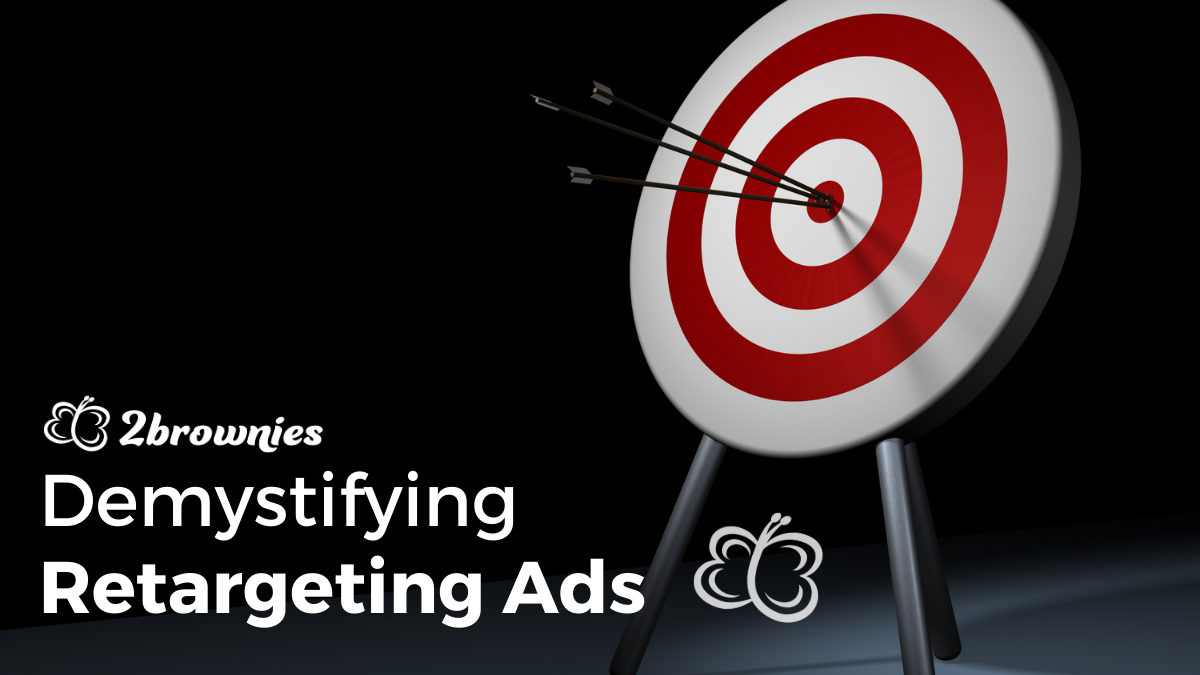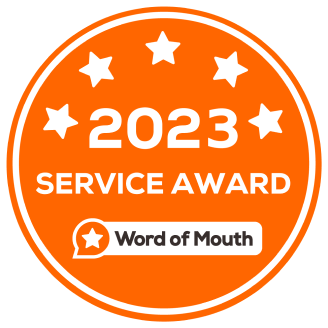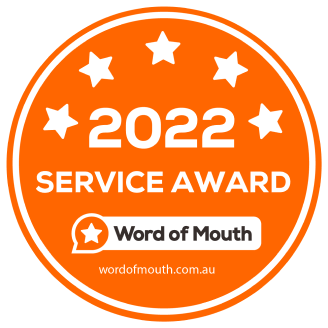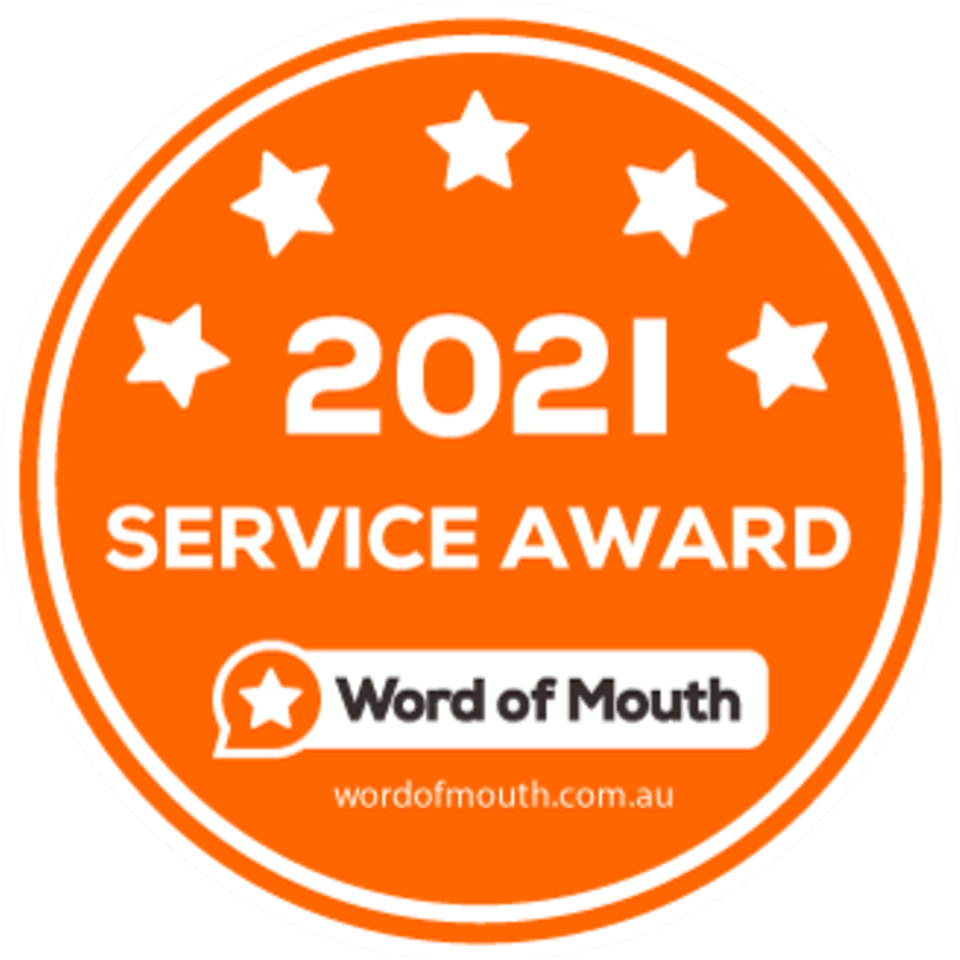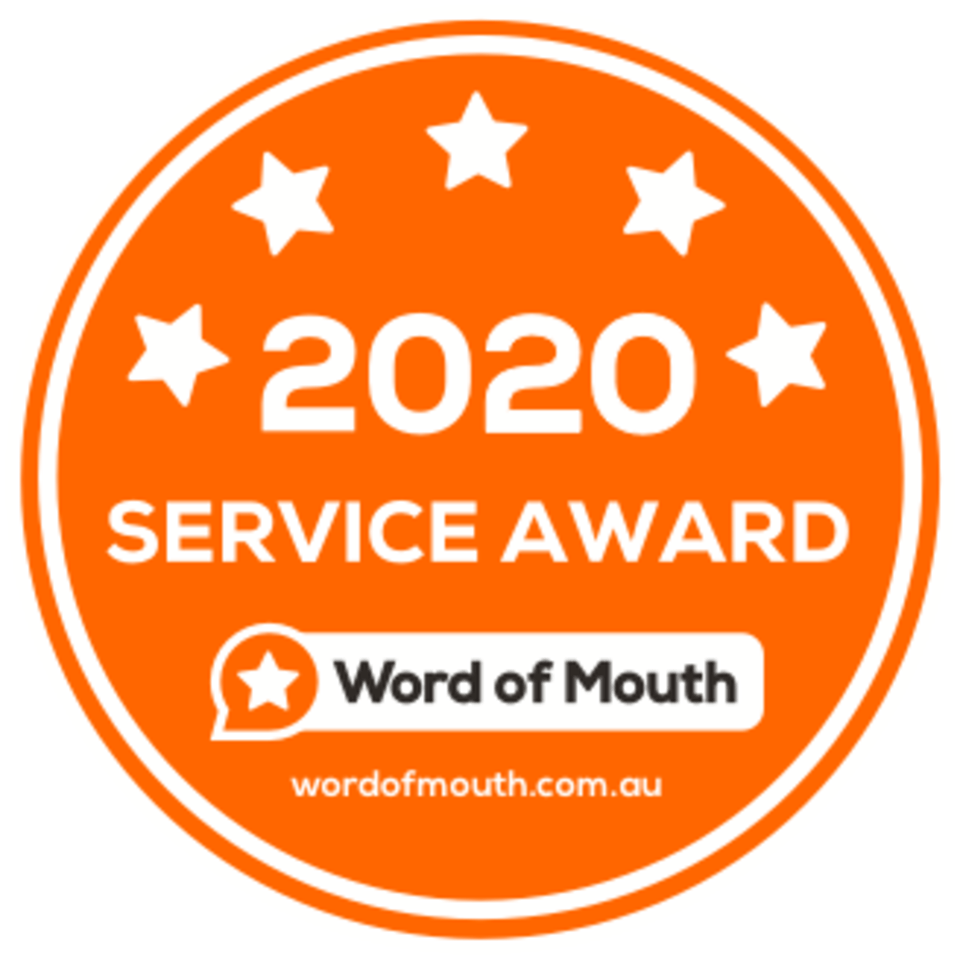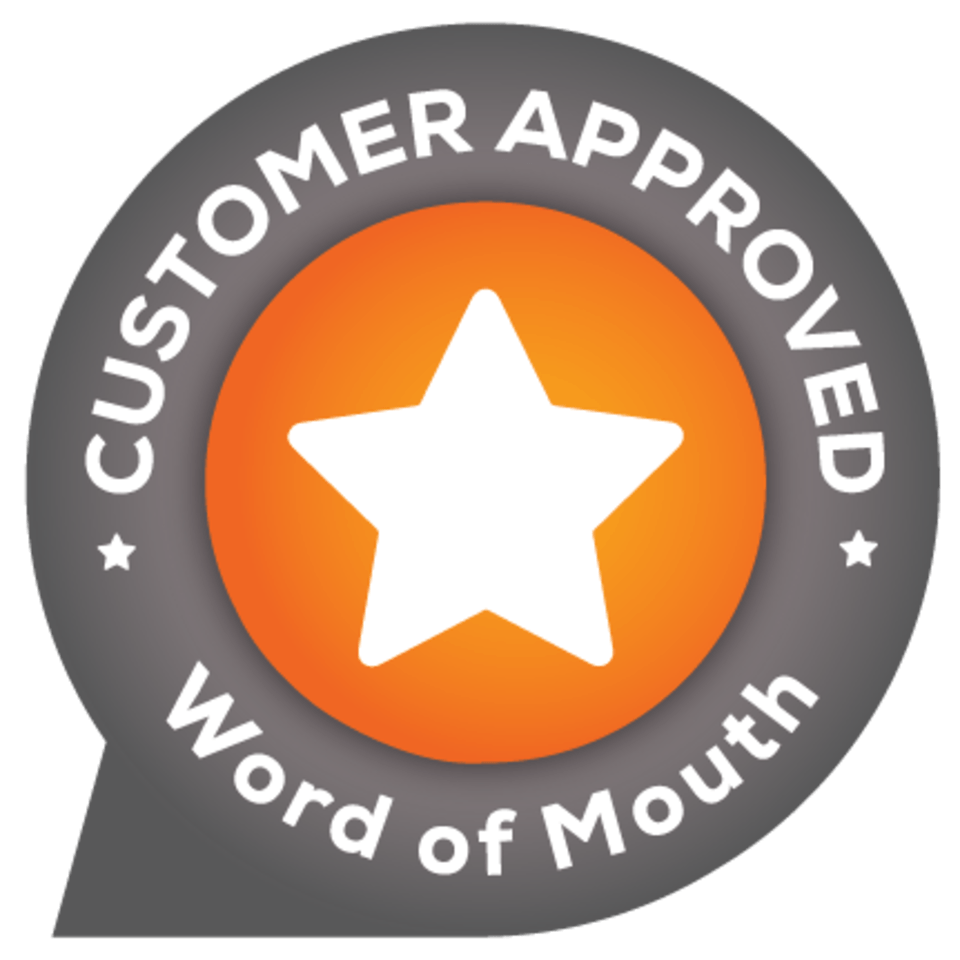
7 Key Marketing Steps for NDIS Service Providers: The First 6 Months
Starting a business as an NDIS service provider can be an exciting and daunting experience, but it’s essential to have the right marketing steps in place from day one. When you're just starting out, following key marketing steps in the first 6 months after launch is critical for achieving long-term success.
But don't worry - it doesn't have to be complex or take time away from providing disability support services. The steps we suggest below can be integrated into your weekly routine and don't require any particular marketing expertise.
From defining your target audience to building relationships with referral partners - there are many important elements that need attention during this crucial period of growth. In this blog post we'll explore these vital steps for your NDIS provider business so you can set yourself up for future success.
Table of Contents:
- Why marketing is crucial for new NDIS provider businesses
- Define your target audience
- Optimise your website for SEO
- Building links back to your website
- Create marketing collateral
- Business Cards
- Brochures
- Build Referral Partnerships
- Create a Google Business Profile
- Track Your Results And Make Adjustments
- Conclusion
Why marketing is crucial for new NDIS provider businesses
Marketing is essential for any NDIS provider business, especially when you're just starting out. It helps to create awareness and visibility, build relationships with participants and referrers, and establish a brand identity. Without marketing, it can be difficult to reach potential clients.
As a new NDIS provider, it's worth noting that there are many competitors vying for the same customer base. Establishing an effective marketing strategy will help you stand out from the competition and attract more clients who need your disability support services.
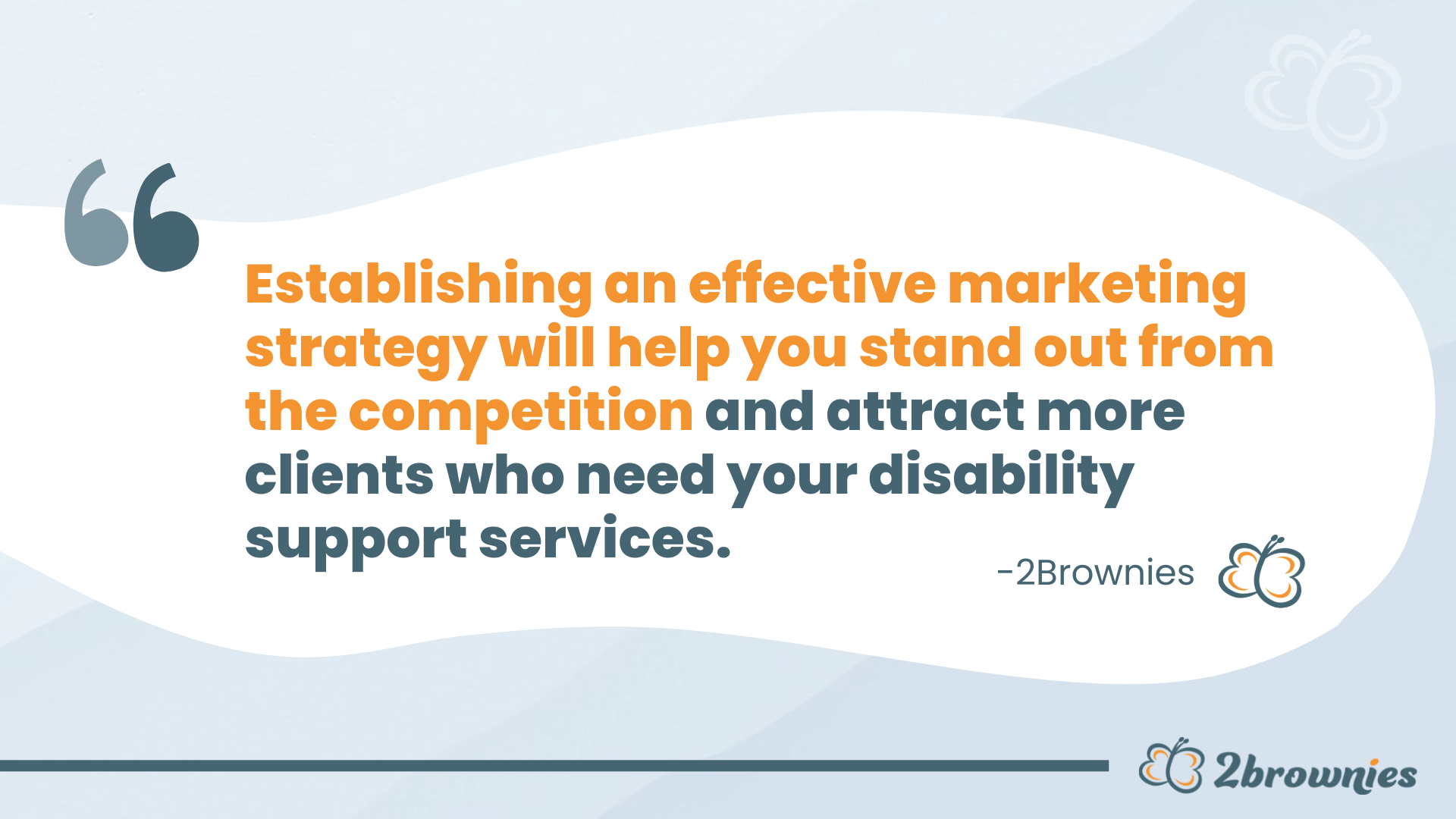
However, your marketing strategy doesn't need to be complex or expensive - this is especially true for NDIS providers, as the whole industry is built on trust and respect, which really cost nothing. That's why we recommend focusing heavily on building relationships in your first 6 months of operation.
Even though a marketing strategy doesn't need to be complex, you do need to have some sort of plan in place so that you can focus your efforts for maximum results. So, let's dive in. Here are the key steps we recommend after launching your business as an NDIS provider.
Define your target audience
When it comes to marketing your business as an NDIS provider, defining your target audience is key. Knowing who you’re targeting will help you communicate in a way that resonates with them and tailor your messaging to their needs. This step should only take a few minutes, but it's surprising how many NDIS providers have never really asked this question.
For NDIS service providers, this could mean considering factors such as age, disability, location and interests of the people you want to reach. For example, if a provider wants to focus on psychosocial recovery services for adults leaving the justice system between the ages of 18 and 65, then they would need to consider what type of content appeals most to people facing these particular challenges.
Are there any special considerations that need to be taken into account? What do potential clients need from me? Understanding what your target audience needs and wants from you can help you create more effective messages that speak directly to your client base.
Location can also play an important role when it comes time for NDIS disability support providers to define their target audience. It may be beneficial for a provider located in Bankstown in Sydney for instance, to focus only on Bankstown and surrounding suburbs rather than trying to reach participants all across Sydney.
Defining your target audience requires careful thought, but once done correctly it provides you with invaluable insight so that all your marketing efforts are targeted to the right people. It's a crucial first step, so go ahead - take a few minutes to write down the key characteristics of your target audience and refer to it often.
Once you've identified your target audience, it's time to optimise your website for SEO so that you can reach them more effectively. (Don't panic - if you're a 2Brownies customer, we do this step for you!)
Optimise your website for SEO
(Now, we're not suggesting for a moment that you need to become an expert in search engine optimisation. And if you're a 2Brownies client, this step has already been done for you.)
But it doesn't hurt to just make sure your website is totally aligned with your new, well-defined target audience.
SEO helps ensure that your website appears in search engine results pages (SERPs) when people search for relevant keywords or phrases related to your NDIS services. Optimising your website for SEO can help increase visibility and drive more traffic, so it’s important to understand the basics.

When we build your website, we try to identify the most important keywords and phrases related to your particular NDIS business offering. Once we identify these terms, we use them throughout the content on your website as well as in titles, meta descriptions, image alt tags, etc., so that they appear in SERPs when someone searches using those terms.
We then create quality content that provides value to readers while also incorporating targeted keywords naturally without overstuffing them unnecessarily. Content should be informative and engaging; if visitors find something interesting on a page then they are more likely to stay longer and explore other areas of the site too.
Additionally, we make sure all images have descriptive alt text associated with them – this helps search engines better understand what each page is about so they can rank higher accordingly.
So, where do I fit into this technical process, I hear you ask?
Well, once your website is launched and you've defined your target audience, it's always handy to re-visit your site and just make sure that all the content is aligned with who you're trying to reach. Assess your content objectively and if you see any mis-match, let your web designer know so they can make adjustments accordingly.
What we're talking about here is basic on-page SEO.
Basic on-page SEO isn't a replacement for an ongoing SEO program. But we don't recommend that new NDIS providers undertake an ongoing SEO program from day 1. The reason behind this is explained in more detail in this blog post.
Building links back to your website
Links from other websites pointing back to yours show Google that there’s authority behind what’s being said on-site which can result in improved rankings overall. You don’t necessarily need hundreds of links though; just a few high-quality ones from reputable sources will suffice.
This is a super-important step and something you can do at no cost when you have a minute or two throughout your day.
It's pretty simple but can take some time:
- Submit your website and business details to as many online directories as possible, making sure they're quality directories and not just junk websites. Use exactly the same name, address, website url and phone / email information each time.
- Take every opportunity you can find to have other websites link back to your website. Again, make sure they're legit websites related in some way to the disability sector and not spammy.
That's it. Make sure this step is on your radar so that you don't miss any opportunities that come your way. We've made this easier by recommending some online disability sector directories you can start with here.
Create marketing collateral
Creating marketing collateral is an important part of any NDIS provider's success. It can help you spread the word about your services and reach a wider audience. For NDIS service providers, having professional-looking business cards and brochures is essential for making a good impression on potential clients and referral partners.
Business Cards
Business cards are great for networking events or handing out to potential clients and referral partners. They should include your company, name, position, contact information, website url, logo, and a brief description of what services you offer. Carry them everywhere and use them often. (And talk to us about creating your business cards - we can help).

Brochures
Brochures are super important. Why? Because they build trust and help to establish your reputation.
A well-designed, well-written small tri-fold brochure tells people that you're professional. It's an instant visual confirmation that you know what you're doing and are ready to take on new clients. (Your website performs this function too!)
We recommend you have a small, tri-fold brochure that provides more detailed information about what you offer and how clients can benefit from your disability support services. Include images or illustrations that reflect the types of services you provide along with text explaining in very concise terms what those services are and why they’re beneficial.
Borrow heavily from the content on your website so that all your marketing is consistent in message and tone. Add the NDIS logo to your brochure (making sure you use the version appropriate to your status as a registered / non-registered provider).
(Talk to us about creating your brochure - we make the whole process super easy).
Bonus collateral! If you have the time and funds, posters and flyers are another way to spread awareness of your business without incurring excessive costs.
Place posters or flyers in strategic locations such as medical centres, community groups, libraries, council offices or allied health providers so that you can expose your brand to clients who might need your services. Ensure that each poster/flyer contains all the necessary contact information plus a brief description of the services you offer so potential clients can understand what kind of disability support they will receive from you.
Build Referral Partnerships
This is the most important step in building a successful NDIS service provider business in your first 6 months of operation.
The most important step - by far. We can't emphasise this enough.
Why? Because you're a new business and can't rely on your history or client testimonials to grow your business quite yet. So, building relationships with referral partners who trust you and like you and what you offer is crucial to gaining your first few clients.
Referral partners are businesses or individuals who recommend your disability support services to their own clients or contacts. By forming these relationships with other businesses in the disability sector or related sectors, you can create a mutually beneficial relationship that will help both parties succeed.
Here are a few types of referrers you can target:
- Allied health providers
- Medical practitioners
- Community groups
- Faith-based organisations
- Cultural organisations
- Local clinics
- Support coordinators
- Plan managers
- SDA accommodation providers (if you offer SIL services)
- Other NDIS service providers who are super busy and might like to refer clients to you
- Other NDIS service providers who offer slightly different but complementary services
More than any other sector, the disability sector runs on relationships and trust. You have a great website, a brochure and business cards - these are your tools. Get out there and show people how friendly, professional and trustworthy you are. They'll remember you and recommend your services to people in need of disability support.
Don’t forget about online networking through social media platforms like LinkedIn and Facebook. Send a message to potential referrers and introduce yourself. Just start the conversation and keep it genuine. The aim is to build trust, so don't go in with a hard sell. Ask questions and build rapport. Make it about them more than you. Find out what they need or what their clients need. That's always the best place to start.
Finally, make sure that any agreement between yourself and referral partners is clearly understood; this will ensure there are no misunderstandings down the line regarding expectations or responsibilities.
Build your brand with social media
This step is optional. We recommend it for NDIS service providers who are into social media, use it often and understand the platforms well. If this is you, then definitely add social media to your early marketing efforts.
If this ISN'T you, then focus on building referral partnerships instead. But we'd still like you to do one thing in the first 6 months:
Go to Facebook and LinkedIn and create a page for your business. Even if you never post to that page, it will at least ensure that you've secured a social media handle (ie. @xyzcare) related to your business that you can use at a later date.
If you ARE into social media, then keep reading.....
Social media is a powerful tool for NDIS service providers to build their brand. It allows you to reach a large audience quickly and cost-effectively, without having to invest in expensive advertising campaigns. With the right strategy, you can create an engaged community of followers who will help spread your message and promote your business.
To get started with social media marketing, it’s important to define your target audience and determine which platforms they use most often. If you're unsure where to start, we recommend Facebook (for participants) and LinkedIn (for referral partners).
Create accounts on each one and start building out profiles that accurately reflect who you are as a provider. This includes adding profile pictures or logos that represent your brand as well as filling out all relevant information such as contact details, website links and services.
From there, follow these steps:
- Invite all your friends, family and people you know in the disability sector to like your page
- Post once per day on Facebook
- Post twice per week on LinkedIn
- Actively participate in NDIS-related groups - add value where possible
- Use relevant hashtags to increase your reach
- Be funny, informative and genuine
- Make sure 50% of your posts are not about you - celebrate relevant days, offer inspiration, talk about news in the disability sector etc.
- Make 30% of your posts about your business, but in a soft way - a shout out to your team members, photos of you and participants having fun etc. (Post images only with permission, of course!)
- Make 20% of your posts promotional - link to your website, talk about your services, include a call to action (phone us, message us etc.)
Developing a strong social media presence can be a great way to build your brand. You don't need to be an expert - just be genuine, share what's happening in the disability sector and within your own business and post often.
*There's a lot more that goes into an effective social media strategy, so
check out our blog post here on effective social media strategies for NDIS providers as we explore this subject in more depth. And talk to us if you'd like us to
create your social channels and content for you.
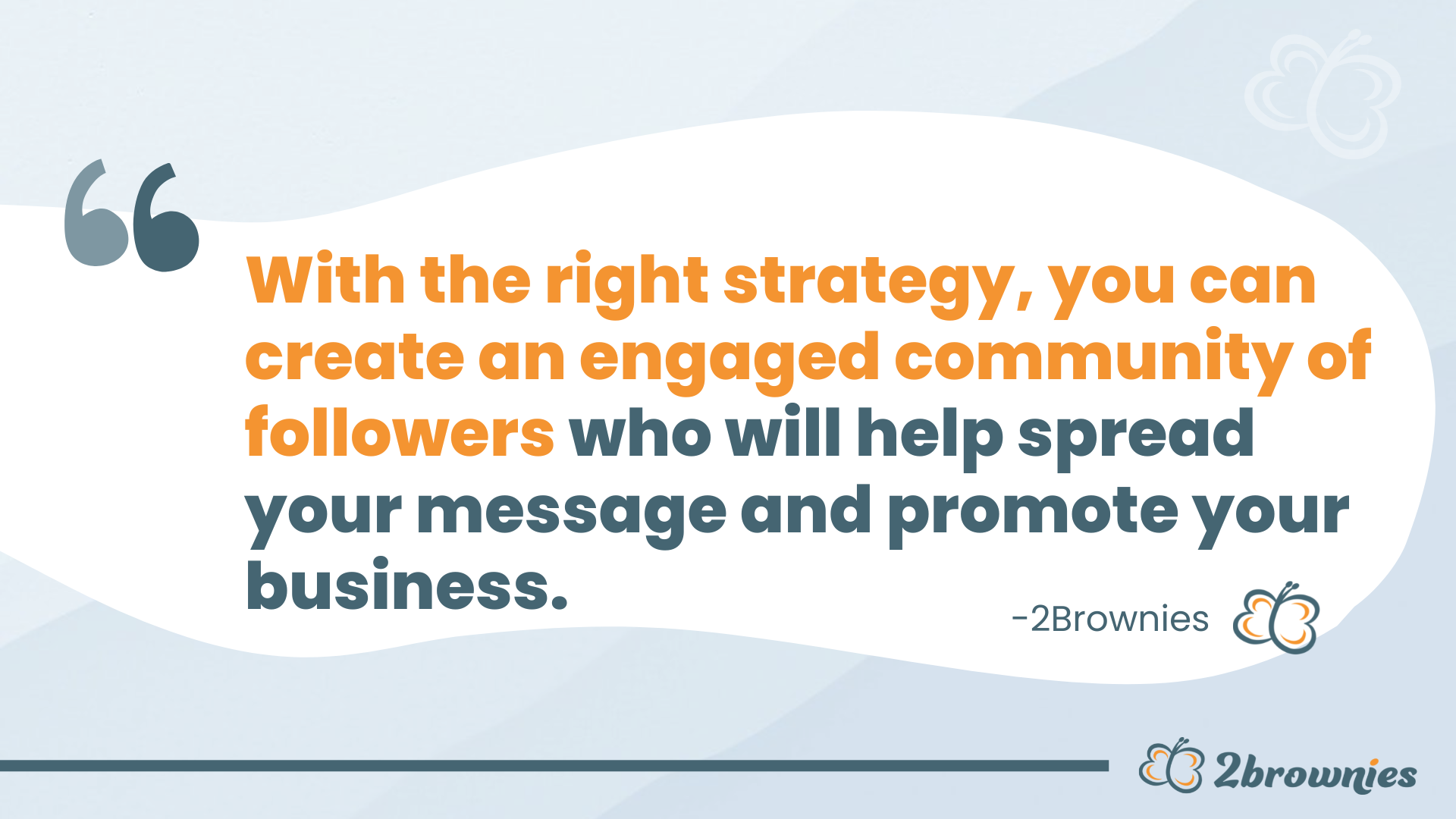
Create a Google Business Profile

OK, it's the last step but it's an important one.
A Google Business Profile is an essential free tool for any NDIS provider that wants to reach local clients. It helps you get found in local searches and on Google Maps, and it also provides a way for clients and their families to easily find information about your business such as hours of operation, contact details, reviews, and more.
But there are a few conditions you need to meet in order to be able to create a Google Business Profile:
- You must have a business address (a physical location, not a PO box), or
- You must be legitimately working from home in a location where clients can visit you
- You should be displaying your physical address on your website
If you are working from home and don't have an address on your website, we recommend you make it a priority to get a physical address for the business sooner rather than later. This can be a shared office space or other location - just as long as it's a physical address that clients can visit.
Creating a Google Business Profile is a quick process but it can be easy to get it wrong. Here are the steps:
Go to google.com/business and click “Start Now”. You will be asked to enter basic information about your business such as name, address, phone number, website URL (if applicable), category (e.g. disability services & support organisation), description of services offered (this is optional).
(Read Google's guidelines before you start so that you know you're not breaching their rules.)
Once you have entered all the required information correctly you can submit it for review by Google which usually takes 24-48 hours depending on how many other profiles are being reviewed at the same time.
A quick note: It's easy to get it wrong when creating your Google Business Profile, which can lead to Google rejecting your submission. If you'd rather leave it to the experts, chat to us about our Google Business Profile services.
Once approved by Google you can start optimising your profile with additional content like photos or videos showing what makes your offering unique. (Make sure not to use stock images). You should also include detailed descriptions about each of your services - this will help boost conversions too.
Make sure that all opening times are accurate so people don’t show up to your premises expecting something different than what is actually available at the time specified online.
Finally, remember that regular updates keep things fresh; post new services or special announcements regularly and respond quickly when someone leaves a comment or question on one of your posts so people feel valued and appreciated.
Creating a Google Business Profile will help you get discovered online. It's especially useful when people are searching for NDIS support services in your local area.
Track Your Results And Make Adjustments
Every so often during your first 6 months, take the time to review your marketing efforts and determine what's working and what isn't. It's an obvious step, but it's surprising how many businesses don't think to measure what they're doing.
When people make inquiries, ask them how they found your business. This can be highly insightful and give you key information on which channels are reaching your potential clients. If certain efforts aren't bringing in leads, ask yourself if there's anything you can do to re-focus or improve. Or better yet - chat to us and we'll help to give you some perspective on what you're doing.
Conclusion
It's always difficult to gain traction in your business as an NDIS provider when you're starting out. (Unless you have a lot of clients ready to go). But by integrating some key steps into your work week, you can maximise your chances of getting noticed by the right people.
If nothing else, we recommend having a great website, a business card and brochure and then committing to regularly getting out in your community.
Building relationships is the most important thing you can do to ensure success in your business in the early days. Because once you have your first few clients on board, they recommend your services to others and before you know it, you have the momentum you need to grow and thrive. (Read our blog post on why testimonials are essential for NDIS service providers).
Are you a small business looking to build your reputation and make your mark? We create awesome websites, social media content, blog posts, SEO and Google Business profiles for NDIS service providers across Australia. Call us on 1300 608 114 or book a chat here: https://calendly.com/2brownies/chat. Our General Manager Vanessa would be happy to answer your questions.

About the Author
Our General Manager, Vanessa, has a background as a business consultant and loves to share her experience and perspective with our clients and readers. If you have questions about your own NDIS provider business, chat with Ness anytime on 1300 608 114 or
find Ness on LinkedIn
or follow Ness for NDIS Provider insights on Medium.
Learn more about Vanessa
here.


